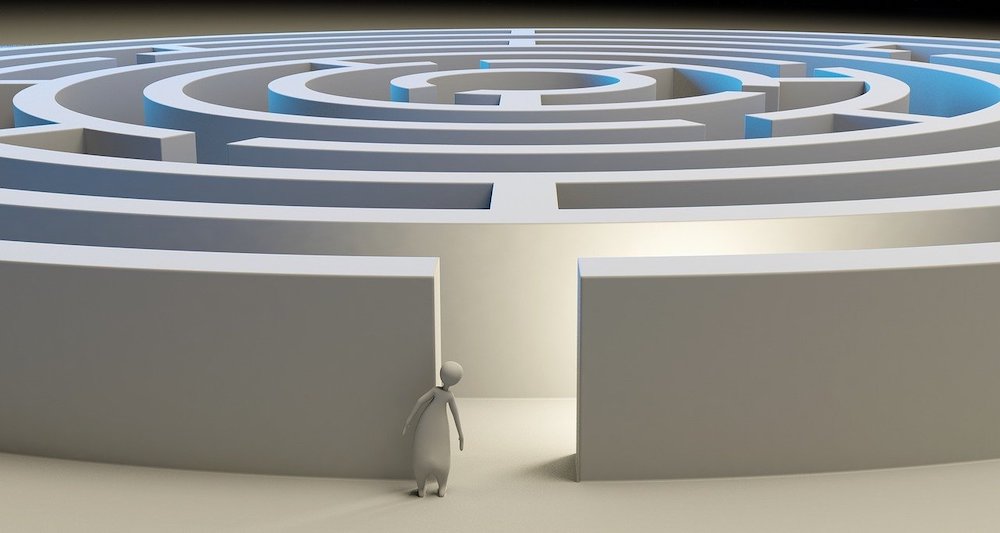I wish I could abolish the F-word – ‘failure,’ that is. It’s the most vulgar word in our vocabulary – a term with the power to dampen down our creativity, our passion, and our soul.
Fear of failure prevents us from fully embracing life. Perhaps you recognize this infinite loop: you take a risk with some trepidation, then condemn yourself if you don’t achieve the desired outcome. You feel crushed, and your fear of failure is further cemented.
On the flip side, ‘success’ may not be vulgar, but it’s certainly lame. What is success anyway? Pick two people and the way they define the term will often be drastically different.
Ask your average CEO, trader, or attorney, and you’ll find money and power at the top of the list. Ask a Burmese Buddhist monk, and you’ll learn that the concept doesn’t really exist. It’s some fleeting fantasy, like most worldly things – like trying to grasp a cloud. If hard pressed, a monk might admit that attaining enlightenment, or Nirvana, would be nice.
Two answers. A world apart.
In truth, there’s scarcely a difference between these terms. In all things in life, you win or you learn. Either way, you grow.
I was a ‘Success Disaster’
In the book ‘Designing Your Life,’ Bill Burnett and Dave Evans birthed this term, describing the results when a person succeeds in their career but years later can’t understand how they got where they are in life and why they’re so unhappy. A success disaster results from focusing on the wrong problem. Burnett and Evans suggest that one type of ‘wrong problem’ involves forcing oneself onto a career path prematurely.
Alternatively, lucky people fail quickly and are forced to work on ‘better problems.’
Better problems revolve around the questions,
- “What brings me joy?”
- “Where is my passion?”
- “What am I naturally, easily, and happily good at?”
Traversing the Wrong Path by Way of the Wrong Problem
I didn’t consider any of these ‘better questions’ when I majored in computer science. I’d flamed out as a rock star (the life of a starving artist wasn’t as romantic as it sounded when someone else was paying the bills) and my parents were catastrophizing that I’d be a forever-lost soul if I didn’t pick a major and return to university. I was marinating in a familiar pressure-cooker.
One quick spin of the mental roulette wheel led me to comp sci. I would be following in my father’s footsteps. It was the antidote to the artist’s life – a safe, steady, and secure career, and…I couldn’t figure out what else to do. Nothing spoke to me. The fact that I’d never touched a computer, hadn’t taken a math class since eighth grade, and had zero analytical skills didn’t even register. Clearly, considering a ‘better problem’ was not on my radar.
Years later, I was a success-disaster poster child. I was working in the heart of Silicon Valley at my dream company, Adobe Systems – at one point acting as their international standards representative. Success personified!
Yet I was miserable. Both coding and debugging were torturous to me. I found myself working twice as hard and long as my peers. I was dealing with sexual harassment on a level that numbed my soul. I was also diagnosed with a spatial learning disability that caused me to confuse letters and numbers. Imagine trying to code with that little hitch.
Bottom line: I failed at computer science. I flunked out of that career and had to start over from scratch. But did I fail? Did I really?
The change process involved a lot of investigation, experimentation, self-inquiry, and self-assessment. But the pivot from computer scientist to psychologist began the day I learned that my brain was refusing to travel on the wrong road to answer the wrong question. I started asking better questions.
Failure is Just the Raw Material of Success
What seems like a loss, or a failure to realize one’s dreams, goals or ambition, can turn into a new source of potential, a hidden goldmine blocked by our own biases. As with most complex concepts and life experiences, our assessment of what has happened is more important to our future and emotional stability than the actual event.
We’ve all heard the stories:
- J.K. Rowling’s original ‘Harry Potter’ pitch was rejected 12 times.
- Steve Jobs was fired from his own company.
- 26 out of 27 publishers rejected The Four Hour Workweek by Tim Ferris.
- Walt Disney was fired from a newspaper because he “lacked creativity.”
- Bill Gates’ first company failed.
All of these stories are shared to inspire, but I take issue with their utility. The problem for me is the triumphant, terminal flourish: they all ‘succeed’ in the end. Brava!
I need help in the middle – when the failure is fresh or success is uncertain. I need sustenance when I’m relying on faith that it will all turn out well. And what I really need is to completely redefine the concept of failure. And success.
In healthcare, we teach elders how to fall. Falling well can prevent injury and, literally, be a life-saver. When your bones are brittle, falling well changes the game.
Here, let’s learn how to fail. Failing well can prevent emotional distress, derailment, and a life without risks, which is no life at all. There is so much to learn about failing well from various fields, endeavors, and philosophies, so let’s learn from those who have failed before and carried on. Failing well changes the game.
Fail Like a Meditator

And if you’re just gone…remember that no matter what happens, at any time, you can always let go and begin again.
Sharon Salzberg
I started meditating shortly after my learning disability diagnosis. It taught me how to turn inward and listen for better questions. What do I value? When do I feel most alive? I had to be present to find the answers.
Meditation is the perpetual embrace of failure – particularly early on.
We humans suck at stilling our minds. The brain – the normal, non-pathological, everyday brain – is a hot mess. It’s like a time machine, jumping back in time (often regrets, sometimes nostalgia) and forward in time (often anxiety, sometimes anticipation). Left to its own devices, it lands on the present only briefly and sporadically, like a stone skipping along a body of water. The whole point of engaging in this weird exercise is to coax the mind to be present. Without training, we miss the moment…again and again.
The beauty of meditation is that it’s a no-fail zone. The moment you notice that your mind is off and running – even if it’s been flitting about for the entire sit – you have scored. Success is simply noticing distraction and non-judgmentally returning attention to the present moment.
The ‘paradox’ of meditation is that when you ‘fail’ you have, by definition, succeeded (you noticed your mind wandered and returned it).
The thing is, this isn’t a paradox at all. Failure is simply an invitation to begin again.
(My itty-bitty instruction: The Two Rules of Meditation in 3 minutes or less)
Fail Like a Scientist

I have not failed 10,000 times. I have not failed once. I have succeeded in proving that those 10,000 ways will not work.
Thomas Edison
How does scientific experimentation work? Spoiler alert: By failing. Lots.
Experiments are not designed to succeed. They’re designed to explore a question and learn. It’s an iterative process, in which every result is a data point that leads forward. There is no failure. You win or you learn.2
More specifically, we sequentially:
- Form a hypothesis.
- Run an experiment.
- Measure the results.
- Publish, refine, or reject.
If the results are spot on, then eureka, we’re done (this never happens, BTW). If the results aren’t remarkable, we refine the hypothesis and reiterate the process.
In grad school, I developed a habit of scientific inquiry, applying the process to every decision. It was liberating to treat every data point as a success – an opportunity to learn, grow, move forward on my path. Where I stumbled, I was always free to refine or dump any idea and begin again.
Fail Like a Wayfinder

“Wayfinding is the ancient art of figuring out where you are going when you don’t actually know your destination. For wayfinding, you need a compass and you need a direction. Not a map—a direction…Since there’s no one destination in life, you can’t put your goal into your GPS and get the turn-by-turn directions for how to get there. What you can do is pay attention to the clues in front of you, and make your best way forward with the tools you have at hand.”3
When wayfinding, failure and success are besides the point. You just unfurl your sail and steer into the wind.
For clues that they’re on the right path, wayfinders turn to body and spirit. When are you in a state of flow? When do you feel engaged and energized? What are you doing in those moments? Alternatively, when do you feel depleted, distracted or unengaged?
Wayfinders investigate values as well. When do you feel aligned? When do you feel resonant (or ashamed, ambivalent, disappointed, bored)?
At one point during my journey, I had this little epiphany: “I care about the environment but I’m working long hours to create machines that consume trees at scale [printers].” Asking myself the questions above, insight came easily. I could never be happy remaining on that path. Wayfinding helped me steer into open water.
Fail Like a Startup

There are a few prerequisites to inventing…You have to be willing to fail.
Jeff Bezos
Failing like a startup is a three-pronged affair.
- There’s no such thing as failure in the middle. You have an idea. You execute if you’re able. You will have multiple failures – often every day. People will try to pull you off course. You will doubt yourself. Keep thinking long-term and stay the course.
- A bias to action is critical to avoid analysis paralysis.
- Failing fast is the only way to fly. This concept is controversial but, when used thoughtfully, results in minimal harm and reaps great rewards. Taking action regularly and decisively allows you to experiment, examine results, and refine or re-define with minimal loss of time. Your goal is to learn and learn quickly so that you can keep moving forward, incorporating improvements as you go.
To be clear, failing fast doesn’t mean that you try to fail or prematurely foreclose on a project and it’s not meant to be applied to big issues, like building a company. Failing fast and well involves implementing small, low-risk experiments and using the data accumulated to design the next iteration.
In my wayfinding process, picking up some volunteer work was a risk-free experiment (it only had upsides for me and for others) and I never would have realized that the world of psychology held interest for me if I had sat around thinking, “What do I want to do with my life?” I also tried some things (most notably, an accounting course!) that was a quick and painless ‘fail.’ Action held in a fail-fast embrace kept the wind at my back.
When failing like a startup, you don’t have to take big risks to garner outsized rewards. Engage in a zillion little experiments, refining along the way, and failure becomes a step in the process toward success.
Multiple Viewpoints, Same Endpoint
As individuals, looking at a single slice of time, it’s easy to feel like a failure. A 10,000-foot view from areas of inquiry can help us understand that failure and success are enmeshed and, together, pave the path forward.
- Meditation: One must first fail to succeed (returning attention requires having previously lost it). This is the essential paradox.
- Science: Experiments aren’t designed to succeed. They’re designed to learn.
- Wayfinding: Failure and success are irrelevant. Rather, focus on alignment: “What feels right?”
- Startup culture: Failure is simply a step on the road to success.
In sum, meditation provides a skillset to recognize feelings, scientific inquiry invites us to experiment with those feelings, and wayfinding allows us to feel our way toward ‘better questions.’ Mixing in the ‘fail fast safely’ startup gospel and we have a system of failing well.
Failing at a career in the performing arts allowed me to live in a way that’s been more compatible with my constitution. Failing at computer science gifted me a transition to a career that resonates – one in which I shine, thrive, and change lives. Enter a time machine, and nearly every failure looks like a success.
Embrace the failure, my friends, and carefully draw the line. Because the distance between success and failure is a fine thread and often, just a matter of time.
1 Burnett, B., & Evans, D. (2016). Designing Your Life: How to Build a Well-Lived, Joyful Life (1st edition). Knopf, 187.
2 Publishing, promotion, and reaching tenure are a whole different story, for another time.
3Burnett, B., & Evans, D. (2016). Designing Your Life: How to Build a Well-Lived, Joyful Life (1st edition). Knopf, 42.





0 Comments